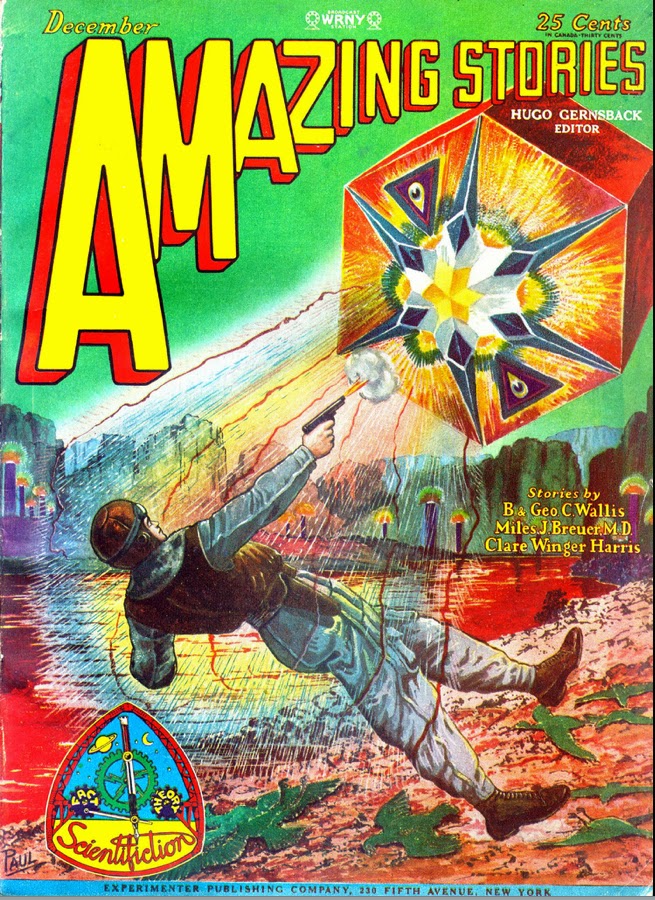Desperate struggle

Amazing Stories (December 1928), cover ill. Frank R. Paul
The transition between what Peirce would call “secondness” and “thirdness” is a treacherous one. All too frequently, one finds oneself engaged with one’s own schema in a desperate struggle for the upper hand.
The paradigmatic “anthropological” conception of culture (as it was developed from its Boasian origins into a “configurational” model), one is given to understand, is a strong and internalized constraint on action: a coherent system with an inner necessity, not a merely contingent configuration of social forces and structures. Clifford Geertz, for whom culture is a system of shared meanings and symbols that shape human behavior and understanding, compares cultures to crystals: “Instead of just culture as such,” he writes, “one had cultures — bounded, coherent, cohesive, and self-standing: social organisms, semiotical crystals, microworlds.”
Paul Valéry: “L’éclat de ces systèmes cristallins, si purs et comme terminés de toutes parts, me fascinait. Ils n’ont point la transparence du verre, sans doute; mais rompant en quelque sorte les habitudes de l’esprit sur leurs facettes et dans leur dense structure, ce qu’on nomme leur obscurité, n’est, en vérité, que leur réfringence.” See the essay “The Scientific Analogies of Paul Valery” by Reino Virtanen.
A selection from a series of posts — originally published by our sister website, HILOBROW — attempting to depict the intellectual and emotional highs and lows of developing a semiotic schema.

